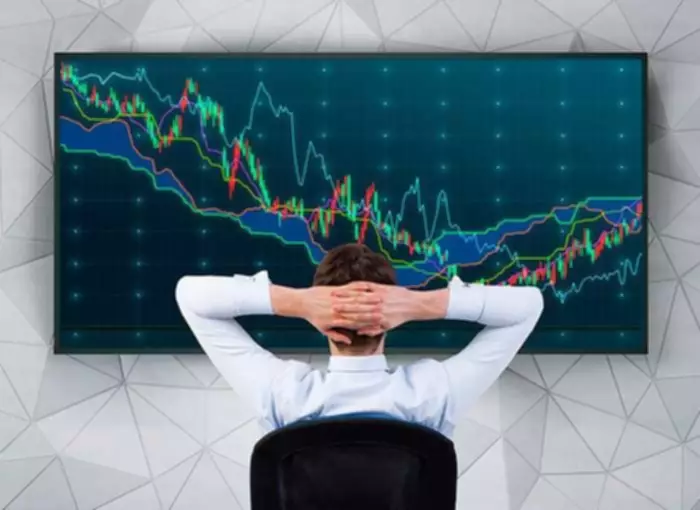When the price of a security has been declining over time, a wedge pattern might form just before the trend reaches its lowest. Due to the confident mindset of the investors who anticipate the trend to persist, these reversals can be rather severe. The simplest approach to notice the narrowing of the channel, which is the initial significant clue that a reversal is brewing, is to use trend lines. As a reversal signal, it is formed at a bottom of a downtrend, indicating that an uptrend would come next. A descending triangle forms with an horizontal resistance and a descending trendline from the swing highsTraders can…
- It is created when the price action forms a series of lower highs and lower lows.
- Traders can place a stop below the lowest traded price in the wedge or even below the wedge itself.
- Harness past market data to forecast price direction and anticipate market moves.
- One method you can use to confirm the move is to wait for the breakout to begin.
- Harness the market intelligence you need to build your trading strategies.
- A stop-loss order should be placed within the wedge, near the upper line.
In the image below you see how we have added some distance to the breakout level. Having said that, here is what a falling wedge might tell us about how market players act at the moment. Being so ubiquitous, false breakouts can be incredibly expensive if not dealt with correctly. In just a bit we’re going to look closer at what you may do to prevent acting on false breakouts.
Is a Falling Wedge Pattern Bullish or Bearish?
One of the continuation chart patterns is the symmetrical triangle pattern, wherein two intersecting trend lines link a set of peaks and troughs to create this pattern. In order to achieve an equal slope, the trend lines should be intersecting. This particular chart pattern implies a period of consolidation before the prices break out.

You could sustain a loss of some or all of your initial investment and should not invest money that you cannot afford to lose. Each day our team does live streaming where we focus on real-time group mentoring, coaching, and stock training. We teach day trading stocks, options or futures, as well as swing trading. Our live streams are a great way to learn in a real-world environment, without the pressure and noise of trying to do it all yourself or listening to “Talking Heads” on social media or tv.
How to trade when you see the Falling Wedge pattern?
This narrowing of the price range signals that prices are beginning to consolidate before making a move higher. The second is that the range of a previous channel can indicate the size of a subsequent move. In this case, it’s often the gap between the high and low of the wedge at its outset. If a rising wedge begins with support and resistance 100 points apart, the market may then fall 100 points once the breakout is confirmed. In the Gold chart below, it is clear to see that price breaks out of the descending wedge to the upside only to return back down. This is a fake breakout or “fakeout” and is a reality in the financial markets.
To identify a falling wedge pattern, the first thing you need to find is a price consolidation after a downward trend. Then, you need to identify two lower highs and two (or three) lower lows. Because the rising wedge pattern is commonly seen after prolonged trends, it can be very useful and effective in trading Bitcoin and other cryptocurrencies. The wedge pattern, for example, may serve as a cautionary indicator of an impending pullback if a cryptocurrency trend has advanced a bit too far a bit too fast. For example, Bitcoin started forming a falling wedge pattern after it surged to almost $14k in June of 2019.
Cutting losses
Trade over 4,000 Forex, Stock Indices, CFD Shares (ASX & International), Commodities (Energy & Metals) and Crypto markets. Invest in over 3,100 ASX Stocks and ETFs, get HIN protection (CHESS), free live data, and 24/7 live chat and phone trade support. Never lose more than what you deposited, no matter what the market conditions. Increase your income and get compensated for your trading knowledge with ThinkInvest, putting you in control. We are opposed to charging ridiculous amounts to access experience and quality information. Also, we provide you with free options courses that teach you how to implement our trades as well.

Therefore, rising wedge patterns indicate the more likely potential of falling prices after a breakout of the lower trend line. Traders can make bearish trades after the breakout by selling the security short or using derivatives such as futures or options, depending on the security being charted. These trades would seek to profit on the potential that prices will fall. The falling wedge pattern occurs when the asset’s price is moving in an overall bullish trend before the price action corrects lower.
How to identify the Falling Wedge pattern?
🟢 RISING THREE
«Rising three methods» is a bullish continuation candlestick pattern that occurs in an uptrend and whose conclusion sees a resumption of that trend. The first bar of the pattern is a bullish candlestick with a large real body within a well-defined uptrend. Below we are going to show you the two ways in which you can find the falling wedge pattern.
The bottom line climbs at a sharper angle as compared to the top one, despite the fact that they both head in the same exact direction, thereby leading to convergence. After passing through the bottom boundary line, prices normally fall. As with their counterpart, the falling wedge may seem counterintuitive. They push traders to consider a falling market as a sign of a coming bullish move. But in this case, it’s important to note that the downward moves are getting shorter and shorter. This is an indication that bullish opinion is either forming or reforming.
Trade idea
For this reason, we have two trend lines that are not running in parallel. The falling wedge pattern is a bullish trend reversal chart pattern that signals the end of the previous trend and the beginning of an upward trend. is a falling wedge bullish When the higher trend line is broken, the price is predicted to rise. Technical analysis or Charting allows investors to use a range of patterns to assist them with timing their entry to and exit from positions.
